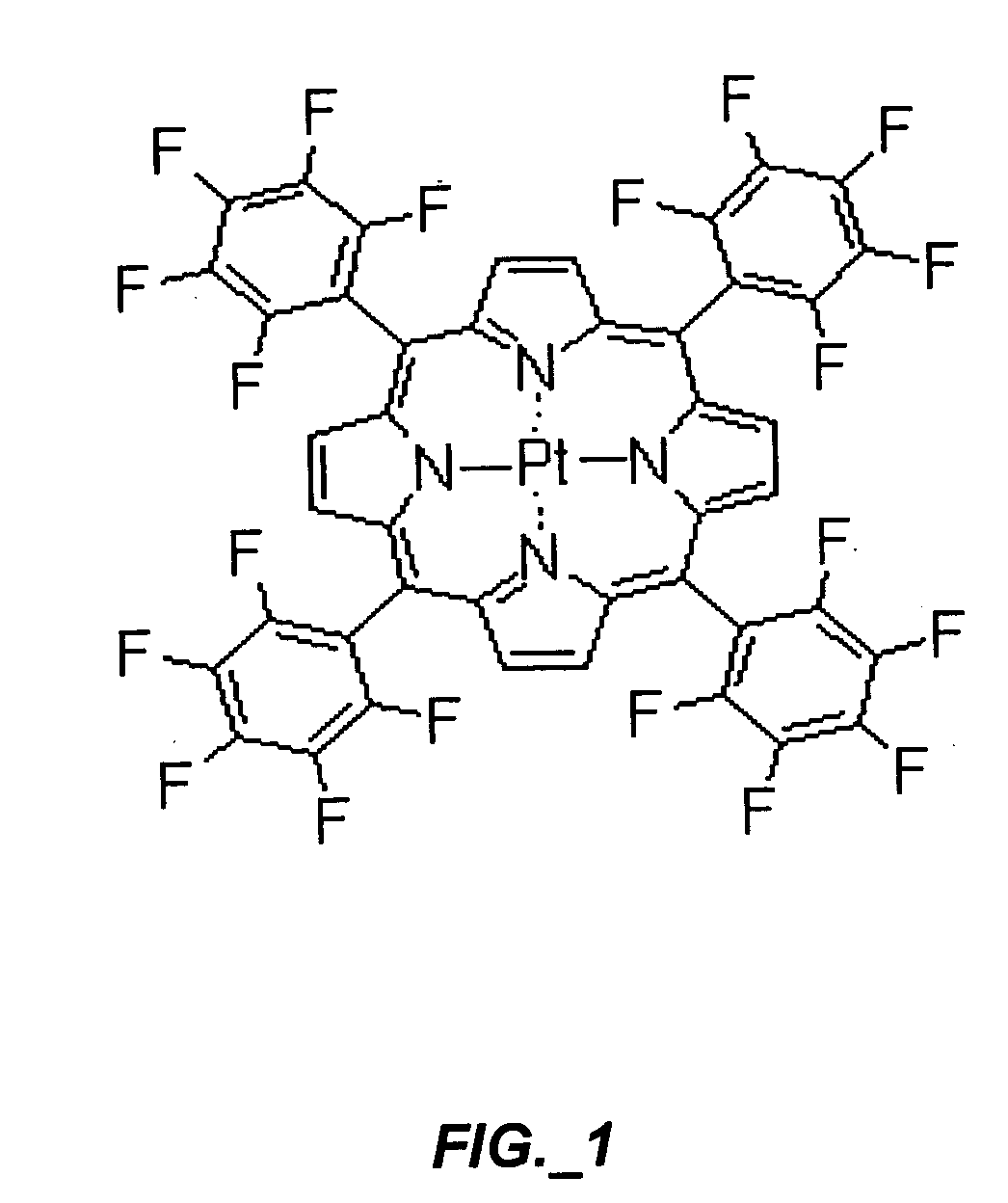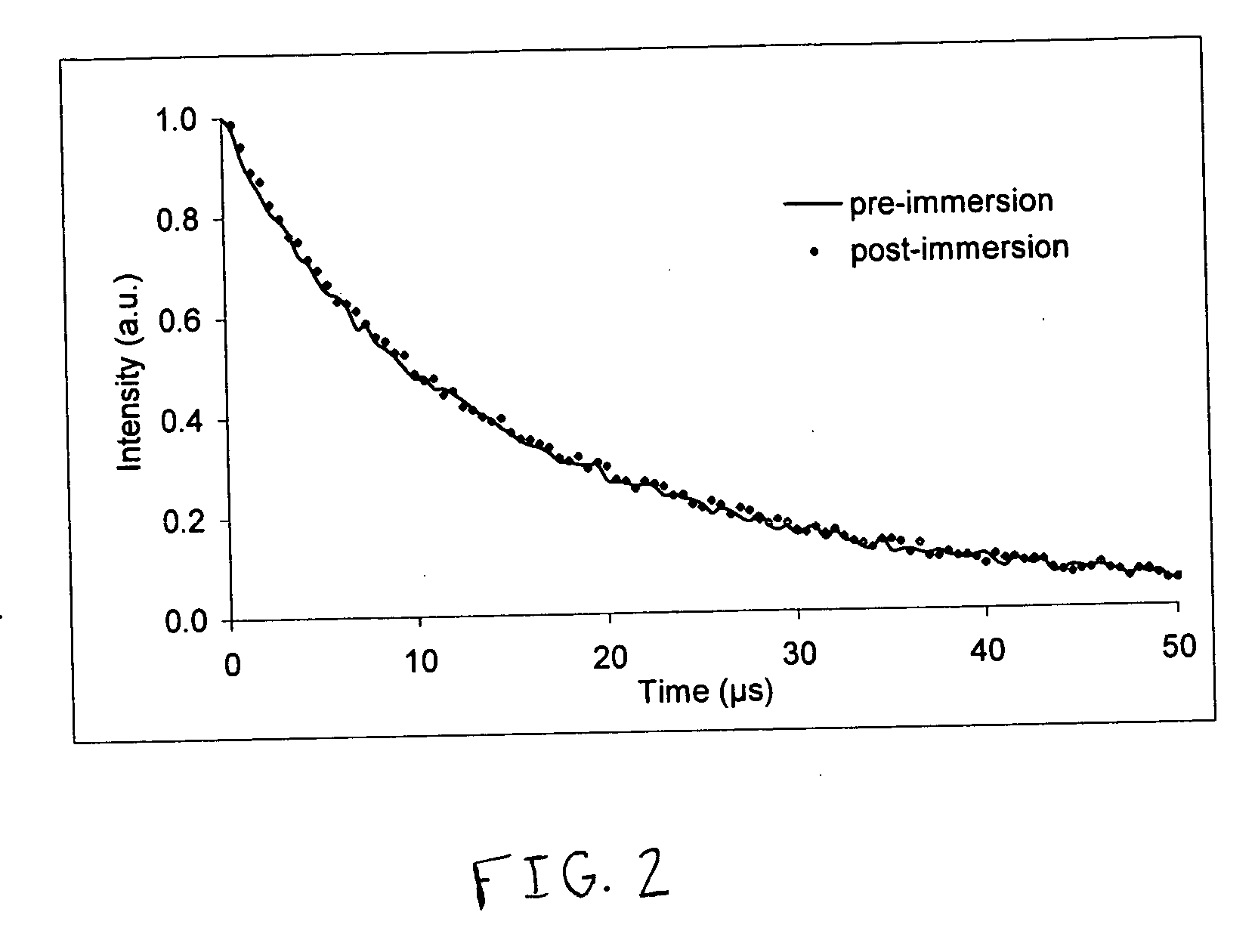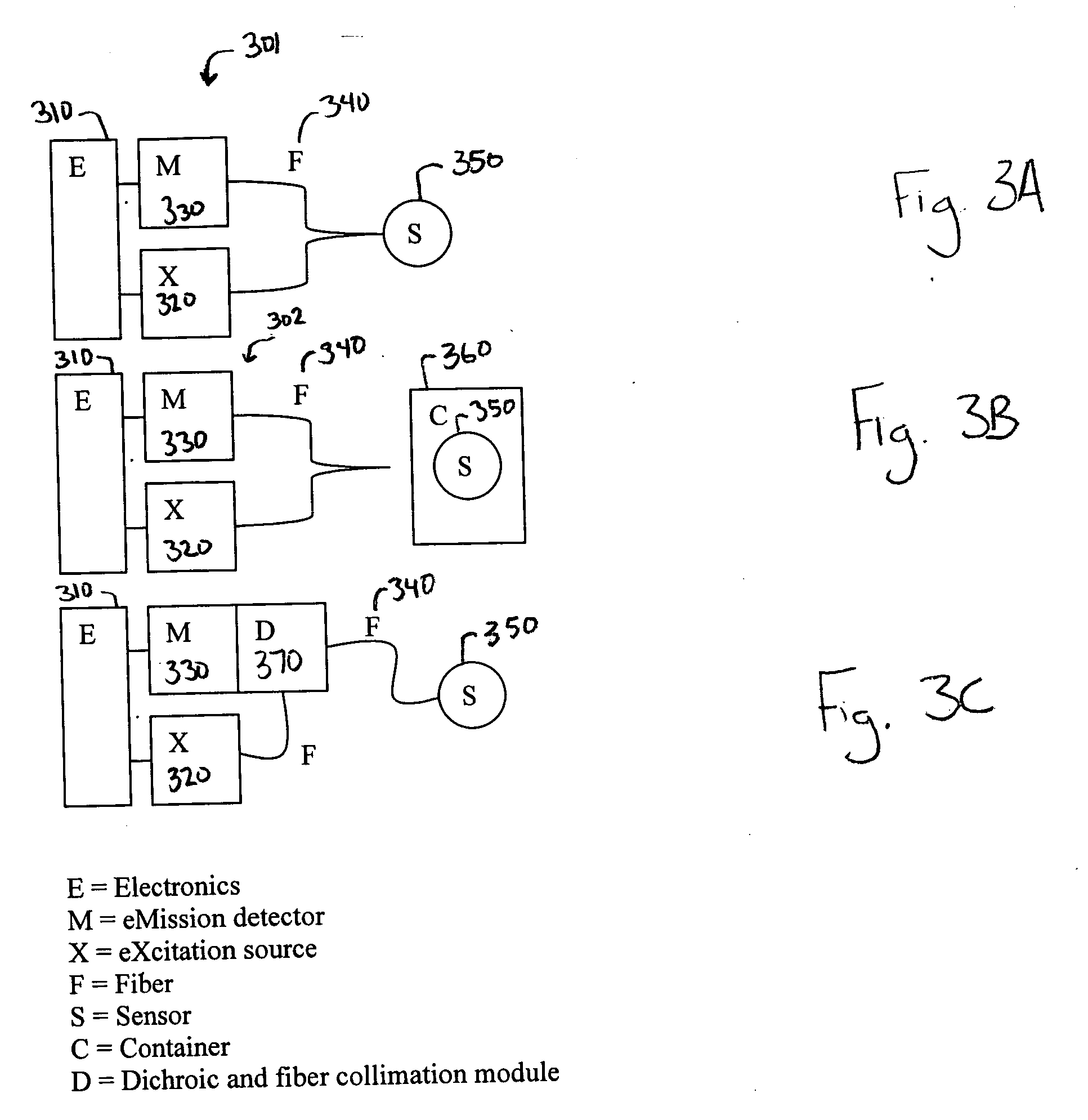Sensors for measuring analytes
a sensor and analyte technology, applied in the field of sensors, can solve the problems of inability to obtain accurate analyte concentration values inability to accurately measure oxygen,
- Summary
- Abstract
- Description
- Claims
- Application Information
AI Technical Summary
Benefits of technology
Problems solved by technology
Method used
Image
Examples
example 1
[0060] Preparation of Oxygen Sensor
[0061] Swelling method. In one embodiment, the sensor construction procedure is as follows. A circular coupon with roughly ¼ inch diameter and 50 μm thickness is cut from a sheet of the amorphous fluorinated polymer. The dye is dissolved in octafluorotoluene. The amorphous fluorinated polymer coupon is then placed in contact with this dye-octafluorotoluene solution until the octafluorotoluene evaporates, or a sufficient amount of dye has been absorbed into the amorphous fluorinated polymer. Following drying, the sensor coupon is washed with acetone to remove residual dye from the surface. In another embodiment, the sensor construction includes treating a sheet of amorphous fluorinated polymer with the dye-octafluorotoluene solution, followed by cutting coupons out of the sheet.
[0062] Homogeneous solution method. In this method, the sensor is prepared from Pt(TFPP) dissolved in a suitable solvent together with Teflon AF 2400. Dissolving a small am...
example 2
[0065] Probe Design
[0066] Generally, the sensor probe is designed to allow easy testing and interchangeability of sensor films. The probe may be a 2:1 design with two small-diameter fibers (one each for luminescence excitation and collection) coupled to a single large-diameter fiber. The ultimate diameters will be determined experimentally. This 2:1 design will serve two purposes. First, it will make it easy to swap out the large diameter fiber for testing and replacement and will ensure sufficient optical coupling of excitation light to the sensing film and emitted light back to the detector. In some embodiments, as further described below, the excitation light source is light from multiple LEDs in which a fiber optic line from each LED source is combined onto the larger diameter fiber.
[0067] The sensing film may be applied to the distal end of the large-diameter fiber. For probes that will not be exposed to liquid fuels or high concentration fuel vapors for prolonged periods, th...
example 3
[0068] Sensor System and Testing
[0069] Instrumentation. For a system using the analyte sensor described herein, the system used to record the sensor element's luminescence response includes LED sources, fiber optics, a wavelength selective emission filter, a photodetector, and an electronics package. The electronics consist of a Digital Signal Processor (DSP) running at 40 MHz clock speed and interfaced to a Complex Programmable Logic Device (CPLD) over the DSP's 16-bit databus. The CPLD has two 16-bit counters connected to high-speed comparators. The comparators monitor the photodetector to detect single photon events.
[0070] The light source is an array of eight 370 nm LEDs, operating in parallel, as further described below. The LEDs are driven by CMOS transistor pairs wired in an inverting configuration, with the LED in parallel with the P transistor. This configuration sharpens the falling edge of the LED excitation. LED pulsing is controlled by the DSP.
[0071] Owing to the rel...
PUM
 Login to View More
Login to View More Abstract
Description
Claims
Application Information
 Login to View More
Login to View More - R&D
- Intellectual Property
- Life Sciences
- Materials
- Tech Scout
- Unparalleled Data Quality
- Higher Quality Content
- 60% Fewer Hallucinations
Browse by: Latest US Patents, China's latest patents, Technical Efficacy Thesaurus, Application Domain, Technology Topic, Popular Technical Reports.
© 2025 PatSnap. All rights reserved.Legal|Privacy policy|Modern Slavery Act Transparency Statement|Sitemap|About US| Contact US: help@patsnap.com



